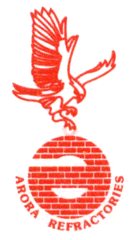Heating Solution - Strip - NiCr
Nickel-chromium Alloys
Those are alloys of chemical composition Ni + Cr + Fe with some additional elements so as Silicium (Si) and manganese (Mn) in order to confer them an excellent behaviour when hot and an addition of rare earth in order to increase their life time.
Alloys in question are:
Resistohm 80 – 70 – 60 – 40 – 30 - 20
Their metallurgical structure confers them a very good plasticity when cold.There is a growth of the grain under heat during utilisation of the element without inducing embrittlement of it when cold. They are used for the manufacture of electric resistances for appliances (insulated elements type tubular resistances or for example opened elements on micanit plate) or for application of industrial furnaces. In addition of a relatively high specific resistance, Ni-Cr alloys join all the necessary properties for good performances in use of furnaces:
Resistance to oxidation (they are not sensitive to aggressions of humid air) Low embrittlement at high temperature Good plasticity – Easier to give them a shape compared with FeCrAl (lower mechanical characteristics allow indeed a good control of elasticity of the product during shaping (coiling, folding, drawing) Good resistance to creeping (more important than ferritic alloys) which is important during conception of a resistance presenting big heights of waves. Maximal temperature recommended in the furnace: 1050 / 1100 °C in order to obtain a reasonable life time of the elements.
Constraints :
Nevertheless, it is to be rejected in presence of a sulphurous or chlorinated atmosphere. The sulphur causes indeed breaking on nickel alloys at higher temperatures of 650 °C (“green rot” phenomenon). For carbonaceous atmospheres, at some temperatures between 600 and 900 °C, Ni-Cr prove less resistant than FeCrAl.

